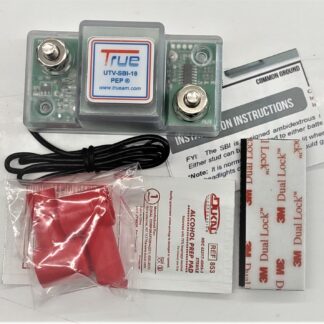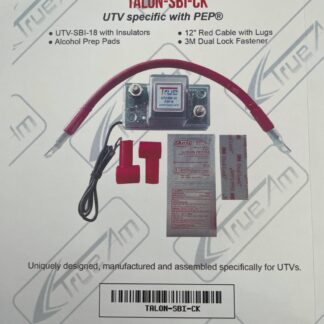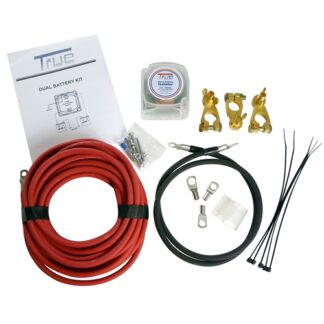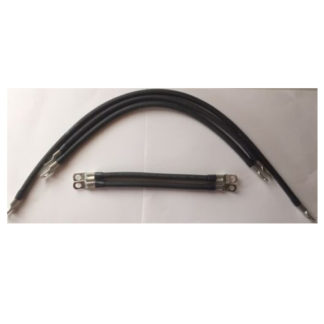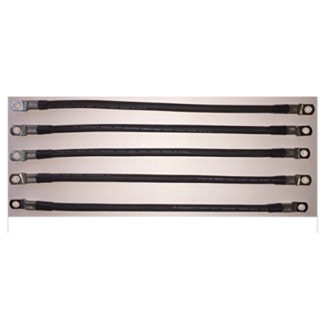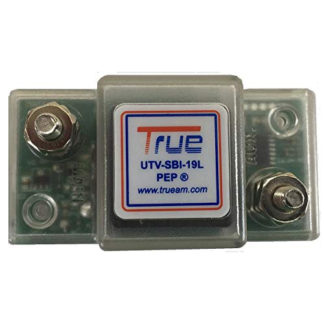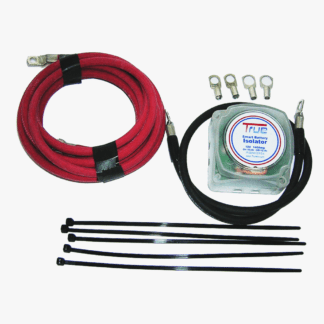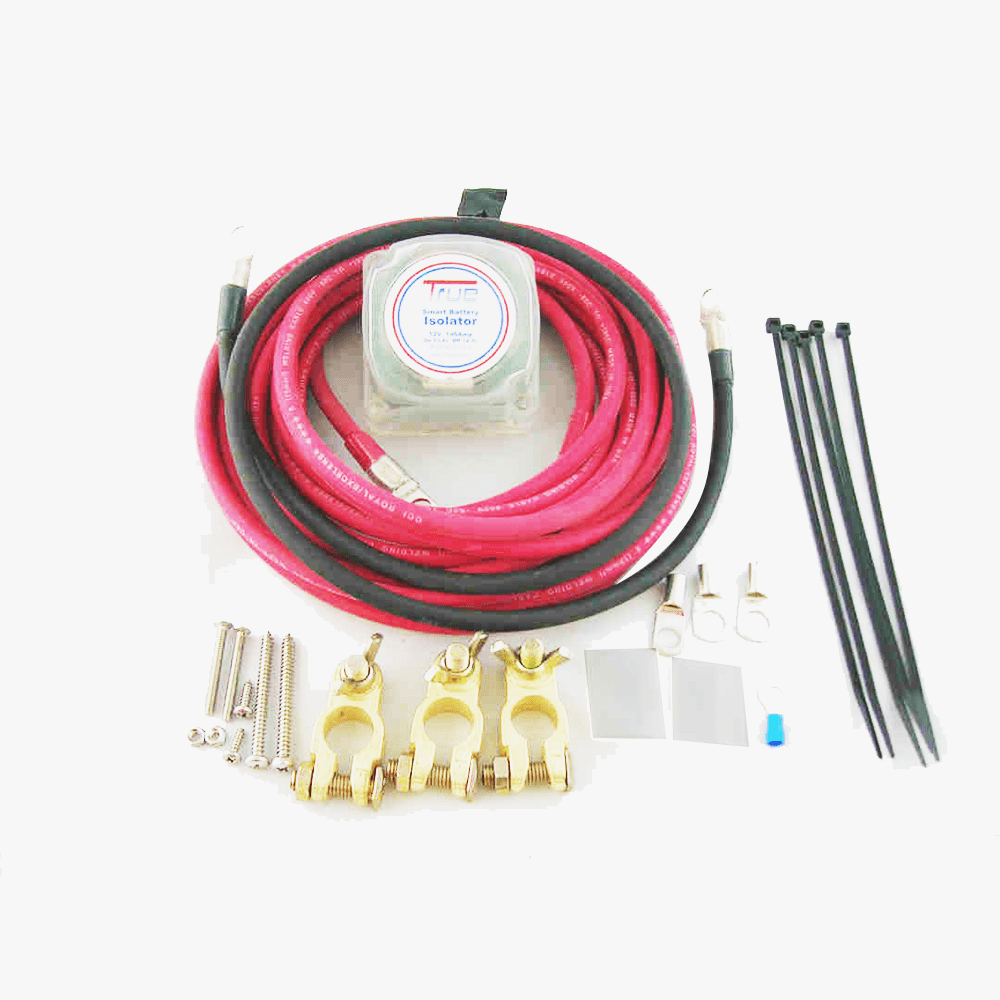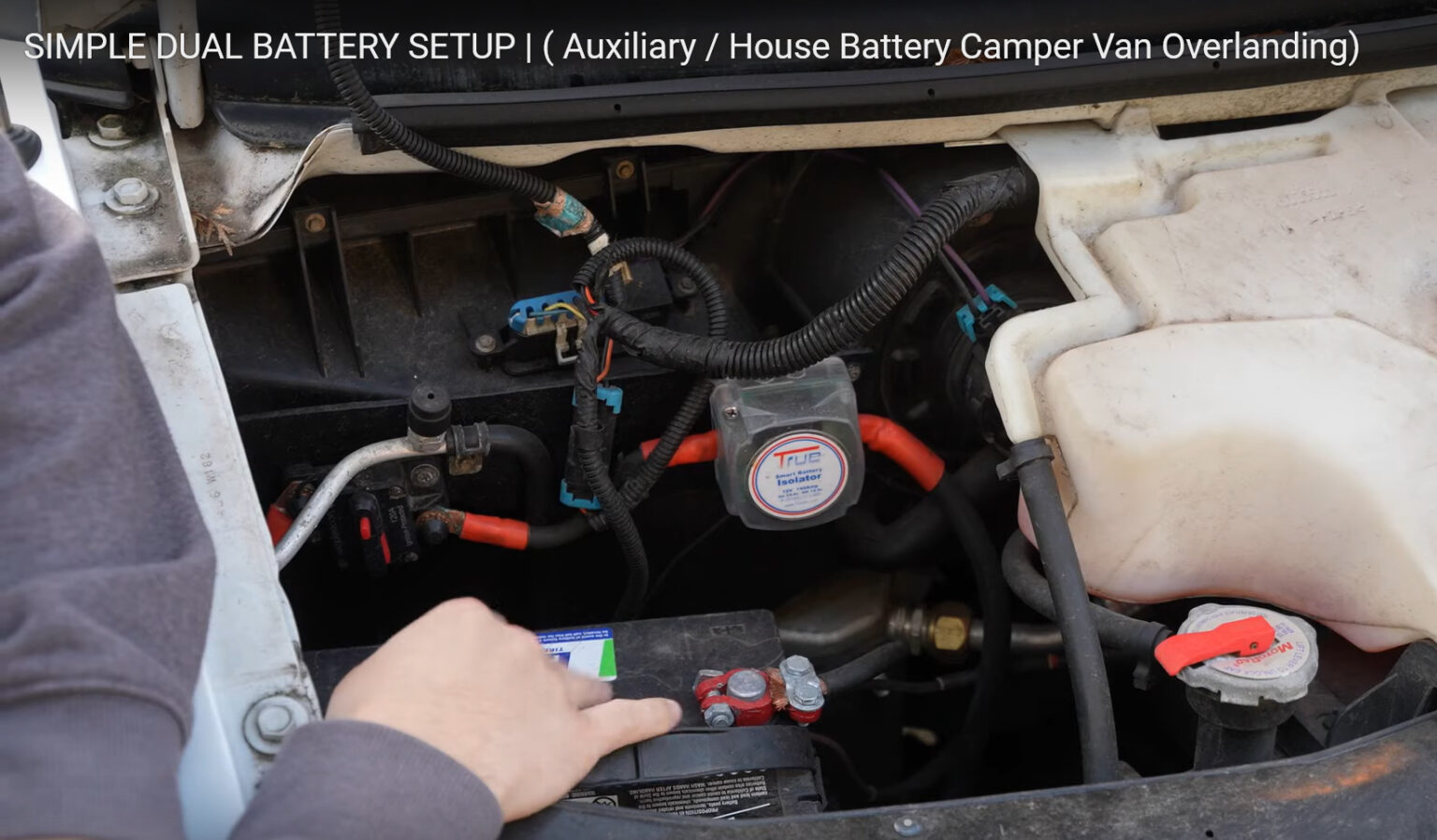
A Campervan dual battery system supplies dependable power for appliances, charges devices, and powers lighting without depleting the starter battery. It expands off-grid adventures, improves energy economy, ensures vehicle start-up, and enables the smooth use of solar or alternate charging sources.
The components, system complexity, and whether you install it yourself or hire a professional all affect how much it costs to set up a Campervan dual battery system. Below is a summary of possible expenses:
1. Components
- Auxiliary Battery: $200-$500 (still depending on kind and capacity, while lithium batteries cost more than lead-acid or AGM batteries).
- Battery Management System (BMS): $100 to $200 (includes DC-DC chargers, True® Heavy-Duty Battery Isolator Kit, and solar regulators).
- Wire and Fuses: $50 to $200 (quality wire, circuit breakers, and fuses are required for safety).
- Solar panels (optional): $100 to $500 (depending on size and quality).
- Inverter (optional): $100-$500 (used to power AC devices).
- Dual Display Battery Meter : $50-$200 (to monitor battery health and usage).
2. Installation
DIY installation costs nothing assuming you have the knowledge and tools, but expertise is required for safety.
Professional installation costs $300 to $1,000 depending on system complexity and labor prices.
3. Estimated Total Costs
Basic DIY System: $400–$800 (simple setup with an AGM battery and isolator).
Mid-Range System: $1,000–$2,000 (lithium battery, DC-DC charger, and optional solar).
High-End System: $2,000–$5,000+ (multiple lithium batteries, high-capacity solar panels, inverters, and professional installation).
4. Additional Costs
Tools (if not owned): $50–$200.
Upgrades: More powerful components for long-term use can increase costs.
Key Considerations:
Battery Type: Lithium batteries cost more but last longer and charge more efficiently. The Lithium battery required a Lithium dual battery isolator. Calculate your power usage to find the appropriate battery and solar system size.
It is better to invest in scalable components if you intend to upgrade later.
By planning carefully, you can balance performance and budget while meeting your Campervan’s energy needs.


